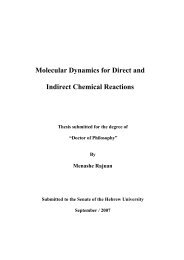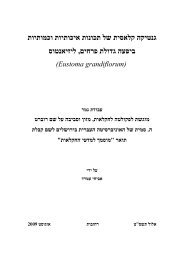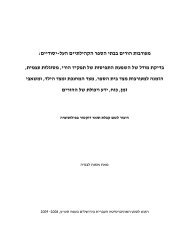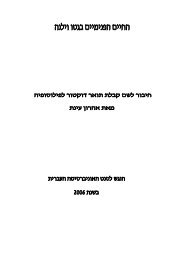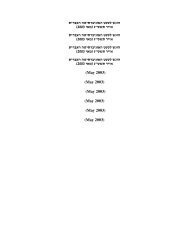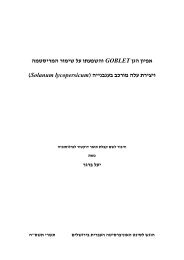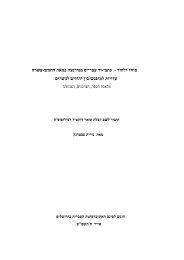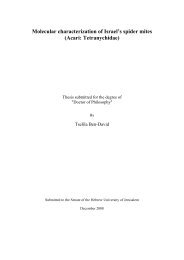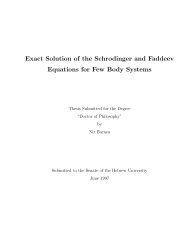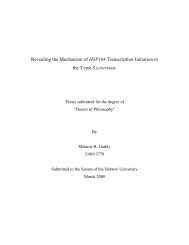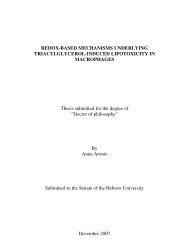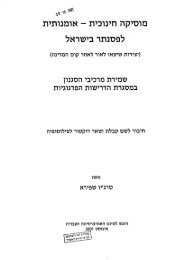××ר×ת ס×פ×ר ×× ×¡ ××קר×× ×××× ×× ××××××ª× ××שר×× - ×××× ××רס××× ××¢×ר×ת ...
××ר×ת ס×פ×ר ×× ×¡ ××קר×× ×××× ×× ××××××ª× ××שר×× - ×××× ××רס××× ××¢×ר×ת ...
××ר×ת ס×פ×ר ×× ×¡ ××קר×× ×××× ×× ××××××ª× ××שר×× - ×××× ××רס××× ××¢×ר×ת ...
You also want an ePaper? Increase the reach of your titles
YUMPU automatically turns print PDFs into web optimized ePapers that Google loves.
is reasonable to assume that the author wished to depict a miracle as having literally<br />
occurred in history. Similarly, adopting the approach of New Criticism, which seeks<br />
meaning in the work itself, ignoring the author`s identity and cultural context, would<br />
lead to the reasonable assumption that the Bible is best interpreted as intending to<br />
present a miraculous story as actual fact, thus supporting a literal/historical reading.<br />
The second reading option, which advocates metaphorical readings of certain<br />
biblical texts, may be found in certain midrashim of Hazal, as well as in some of the<br />
classical commentaries. A modern hermeneutical school that can support this<br />
approach is that of reader response, developed by Stanley Fish and applied to Jewish<br />
texts by Fritz Rothschild and Steve Copeland. In the case of biblical miracle stories,<br />
which focus on the divine and seek to convey the ineffable, the reader will find that<br />
the meaning of the story is most accessible when its details are read as metaphor. It<br />
may further be suggested that, if indeed the divine and the ineffable can be grasped<br />
only by means of metaphorical reading, then arguably the biblical authors may have<br />
intended such a reading, and perhaps certain textual features might guide the reader to<br />
metaphorical understandings. Hence it is arguable that both `authorial intent` and New<br />
Criticism might promote metaphorical readings of biblical miracle stories. This<br />
approach shifts the focus of the miracle story from the issue of its historicity to that of<br />
its meaning. The forms in which the miracle are expressed are also assumed to impart<br />
particular meanings (Pardes), and by analyzing them one can uncover the message or<br />
insight of the story.<br />
The third approach, the dialogical, is similar to the metaphorical approach, and is<br />
also close to certain variations of reader response, such as that of Wolfgang Iser;<br />
however, it allows the text/author more of a controlling voice than do most forms of<br />
reader response. The engagement with the text demanded by the dialogic approach is<br />
316



